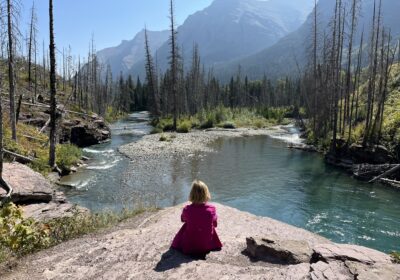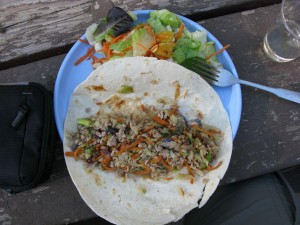Covid Mitigation Plan
Adventure Bus Covid-19 Mitigation Plan (Updated October 27th, 2021)
Vaccination:
Adventure Bus will require that all drivers and passengers be fully vaccinated for Covid-19 to participate in an Adventure Bus tour.
Pre- Travel Guidance/Procedures for Clients
Notify passengers at time of booking of the following procedures, updates and changes. Remind them of these procedures closer to trip departure.
Make passengers aware of local and state procedures for travelers including testing and quarantine requirements relevant to their trip location.
All monetary transactions, signing of releases, waivers and other forms will be taken care of pre-trip for less contact. Passengers will be encouraged to use credit card payment during the tour at restaurants and shops.
Passengers should provide their own masks, hand sanitizer, water bottles, sunscreen, and repellent.
Passengers should consider two week isolation/quarantine before their tour if possible.
Passengers should consider a Covid-19 Test within 3 days of traveling.
Passengers should consider their own risk factors:
Age, underlying medical diseases, travel insurance, plan for illness, returning home plans, requirements for employers upon returning to work.
Recommend a pre-travel Covid test within 72 hours and/or comply with local and state requirements of pre trip testing or testing on arrival. (Policy will develop as testing and vaccines develop)
Passengers will adhere to all policies established by the parks and campgrounds. Guests should be prepared for changes in itineraries including trails, facilities, and services available. Passengers should consider risk level of activities such as remote hiking trails in regards to rescue.
Passengers should bring their own phone chargers and battery packs. Phones should have cases that can be wiped down with disinfectant.
Passengers should bring their own sleeping bag, pillow, and pillow case.
Passengers will be encouraged to bring essential items only and keep personal items packed up.
Pre-Departure Procedures
Consult with passengers on recent health, contacts, symptoms, test results, etc.
Make sure all passengers are informed on procedures regarding PPE, hand hygiene, and social distancing and have brought appropriate equipment, masks, hand sanitizer, etc.
Disinfect vehicles with special attention to high touch areas.
Collect and maintain Emergency Contact and Compliance Cards for all passengers.
Fill out Compliance Card questions:
Have you had a cough or sore throat?
Have you had a fever or felt feverish?
Do you have shortness of breath?
Do you have loss of taste or smell?
Have you been around anyone exhibiting systems of Covid-19 or confirmed with Covid-19 within the last 14 days?
Have you tested positive for Covid 19 in the last 14 days?
Guide/Driver Training
Guides and drivers will be trained in new procedures regarding equipment, food handling, vehicles and hygiene. This will include but will not be limited to hand hygiene, physical distancing, monitoring personal health, proper use and disposal of PPE, cleaning and disinfecting procedures for vehicles and equipment, and working with passengers to enforce procedures.
Hand Hygiene
Hand washing should be frequent and with soap and water for at least 20 seconds. Hand sanitizer should be used when hand washing cannot happen.
Additional key times to wash hands include:
- After blowing one’s nose, coughing, or sneezing.
- After using the restroom.
- Before eating or preparing food.
- After contact with animals or pets.
- Before and after providing routine care for another person who needs assistance (e.g., a child).
- Before, during, and after preparing food
- Before eating food
- Before and after caring for someone at home who is sick with vomiting or diarrhea
- Before and after treating a cut or wound
- After using the toilet
- After blowing your nose, coughing, or sneezing
- After touching an animal, animal feed, or animal waste
- After touching garbage
Physical Distancing
Maintain a distance of six feet or more at all times when possible. Wear a mask when social distancing is impossible.
Recognizing signs and symptoms of Covid-19
Watch for symptoms in passengers and self monitor for symptoms.
- Fever or chills
- Cough
- Shortness of breath or difficulty breathing
- Fatigue
- Muscle or body aches
- Headache
- New loss of taste or smell
- Sore throat
- Congestion or runny nose
- Nausea or vomiting
- DiarrheaEmergency symptoms. Seek Medical attention ASAP.
- Trouble breathing
- Persistent pain or pressure in the chest
- New confusion
- Inability to wake or stay awake
- Bluish lips or face
Proper Use and Disposal of PPE
Masks should be worn when in vehicles, preparing and serving food, and when social distancing of 6 feet or more cannot be met. Gloves should be worn when preparing and serving food and when cleaning and disinfecting. Masks and gloves should be disposed of properly.
What to do if a driver/guide or passenger displays symptoms.
Isolate person and quarantine anyone in contact with that person
Contact local clinic, health department, and medical facility for guidance on how to proceed. Consult Guide Manual for list of medical facilities.
Use emergency gear when interacting with sick passenger:
Emergency Kit: Emergency gear for potential Covid-19 infection.
N95 respirators, Disposable, surgicalmasks, Nitrileexamgloves, Disposable, safetygowns, Face shields, medical wastedisposal bin, adequate, thermometers, extra tent and sleeping bag for quarantine.
What to do if facility, park, campground, closures occur.
Guides/Drivers will keep updated on local Health Department and CDC recommendations and policies and will try and anticipate closures and shutdowns to avoid an emergency situation.
Guides/Drivers will maintain lists of alternative campgrounds, hotels, facilities and activities in the event closures and shutdowns occur.
Guides/Drivers will provide support to passengers if closures require passengers to return home early by assisting them with transportation and arrangements from the original tour departure city as log as it complies with local and Health Department requirements.
Vehicle Procedures
Passengers and guides/drivers will be required to wear masks at all times in vehicles.
Vehicles will be cleaned and sanitized twice daily or more with approved EPA disinfectants with special attention to high touch areas such as door handles and armrests,
Passengers will be required to spread out in the vehicle.
Passengers should provide their own masks and hand sanitizer, but extras will be provided if needed. New masks should be used each day.
No more than 10 passengers or number that complies with local and state policy for group size will be allowed in the vehicle.
A Sanitizing Station will be available before boarding a vehicle
CDCs recommendations will be followed for disinfecting facilities/vehicles if someone becomes sick.
At least 24 hours will pass between different tour groups.
Drivers
Drivers will wear masks at all times. Drivers will remind passengers to wear masks, use hand sanitizer often and insure vehicles have been clean and disinfected.
Guides
Guides will remind passengers to wear masks, social distance and use hand sanitizer in congested areas in campgrounds, on trails, restrooms, etc.
Passengers
No more than 10 passengers or number that complies with local and state policy for current group size.
All passengers will be updated pre-trip as to new operational procedures .
Passengers will be reminded verbally and through visual reminders to avoid personal contact, wear a mask, and keep six feet apart in particular to people outside of the tour party, wash hands and use hand sanitizer often especially when boarding the vehicle.
Passengers should not begin a tour if they have any symptoms or have been in close contact with anyone known to have Covid-19.
Passengers should not begin a tour if they have had a positive Covid-19 test within 14 days of beginning the tour.
Passengers should not begin a tour if they have traveled to a high risk area within 14 days of beginning the tour.
Passengers will be reminded to wear masks whenever entering a building including restrooms, restaurants, or other facilities.
Food Prep and Serving
Drivers/Guides will be required to wear masks and gloves while preparing and serving food.
Good Hand hygiene practices will be followed as required by the health department. (see Hand Hygiene section above)
Proper sanitizing of equipment will be enforced.
Proper use and disposal of PPE will be enforced.
Single use condiments will be used instead of larger communal containers.
Single use wrapped utensils
A Hand washing station will be set up in camp kitchen.
Breakfast and Lunches will consist of primarily pre packaged, grab and go foods.
Dinners will be served by guides to minimize handling of serving utensils, or prepackaged by guides.
No touch garbage bins will be used.
Camp kitchen will be designed with six feet of social distancing for food preppers, servers and eating areas.
Dishes, cutlery, etc will be cleaned by food safety standards including 3 bucket system for cleaning and sanitizing, and air drying dishes.
Checking for cleaning product safety:
Step 1: Check that your product is EPA-approved Find the EPA registration number on the product. Then, check to see if it is on EPA’s list of approved disinfectants at: epa.gov/listn
Step 2: Read the directions. Follow the product’s directions. Check “use sites” and “surface types” to see where you can use the product. Read the “precautionary statements.”
Step 3: Pre-clean the surface. Make sure to wash the surface with soap and water if the directions mention pre-cleaning or if the surface is visibly dirty.
Step 4: Follow the contact time. You can find the contact time in the directions. The surface should remain wet the whole time to ensure the product is effective.
Step 5: Wear gloves and wash your hands. For disposable gloves, discard them after each cleaning. For reusable gloves, dedicate a pair to disinfecting COVID-19. Wash your hands after removing the gloves.
Step 6: Lock it up. Keep lids tightly closed and store out of reach of children.
Sources reviewed for these policies
EPA https://www.epa.gov/pesticide-registration/list-n-disinfectants-coronavirus-covid-19
Disinfecting with Bleach: https://www.canr.msu.edu/news/covid-19-disinfecting-with-bleach
Outdoor Dining: https://www.maine.gov/decd/checklists/restaurants
OSHA
https://www.osha.gov/Publications/OSHA3990.pdf
CDC
https://www.cdc.gov/coronavirus/2019-ncov/travelers/travel-during-covid19.html
https://www.cdc.gov/coronavirus/2019-ncov/daily-life-coping/visitors.html
https://www.cdc.gov/coronavirus/2019-ncov/community/organizations/disinfecting-transport-vehicles.html
National Restaurant Association Re-opening Guide
Teton County Guidelines for Businesses
http://www.tetoncountywy.gov/DocumentCenter/View/14113/Appendix-B–Guidelines-for-Businesses-and-Organizations-6-23?bidId=
ACA Field Guide for Camps Version 1.1 (EH&E 23944).pdf
Washington State Guidelines for Businesses
https://www.governor.wa.gov/sites/default/files/COVID19Phase1and2OutdoorRecreationGuidance.pdf
Oregon Health Authority
https://sharedsystems.dhsoha.state.or.us/DHSForms/Served/le2351i.pdf
Maine Department of Inland Fisheries and Wildlife
MDIFW-guided-activities-guidelines.pdf
Utah
https://coronavirus-download.utah.gov/Health/Utah_Phased_Guidelines_.pdf#page=29



